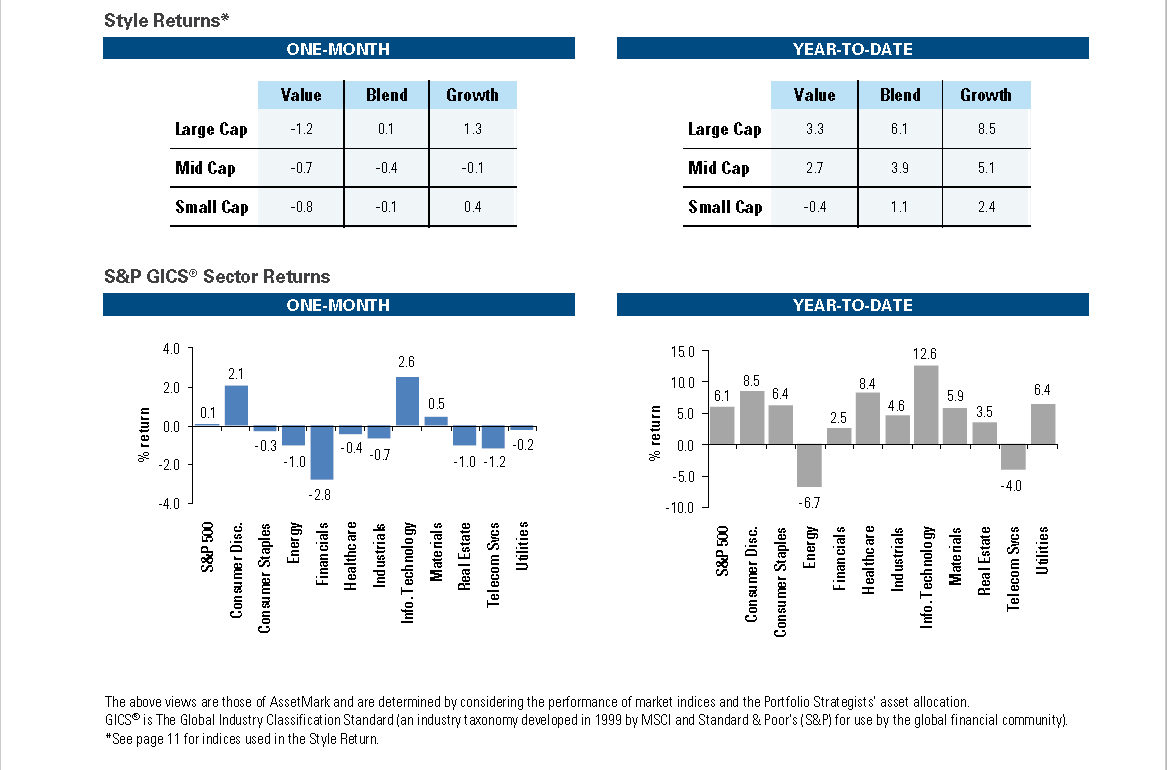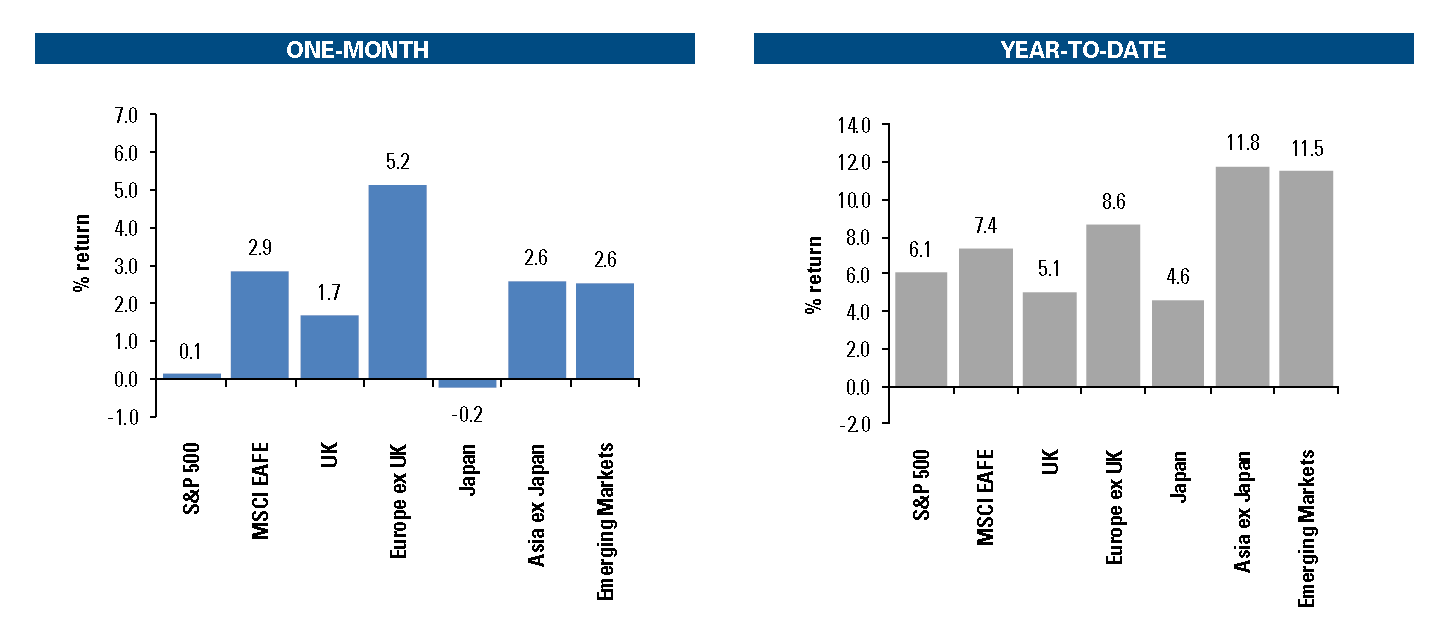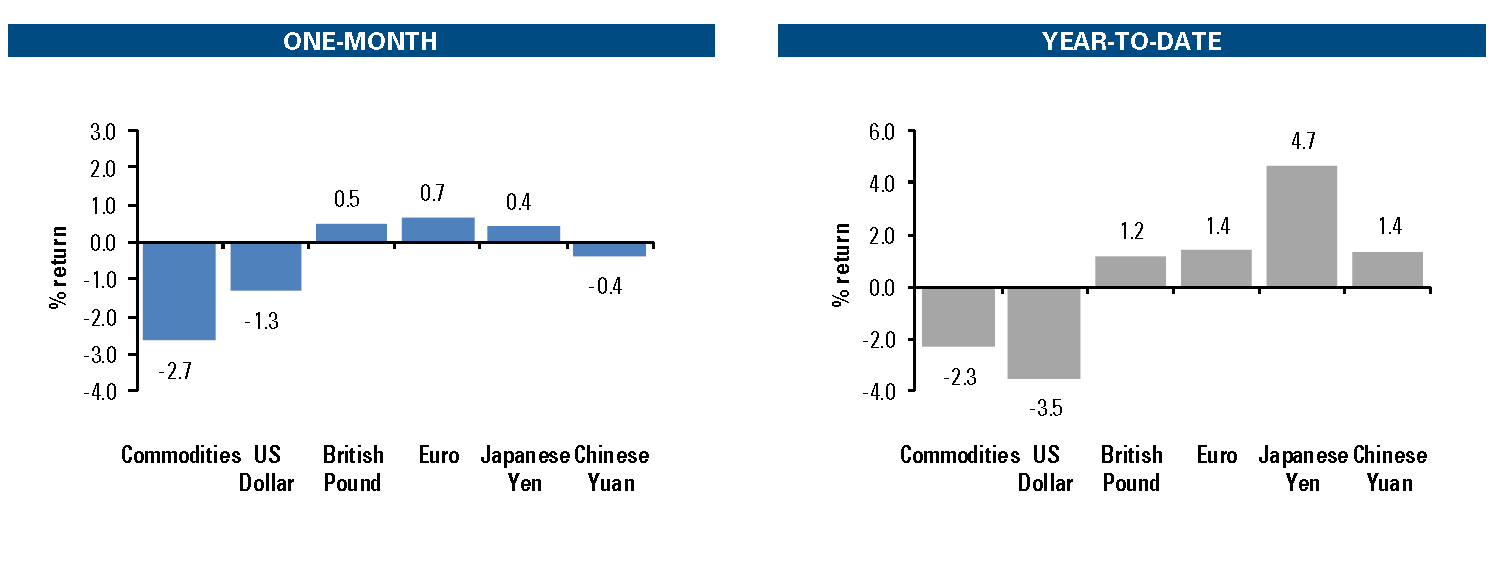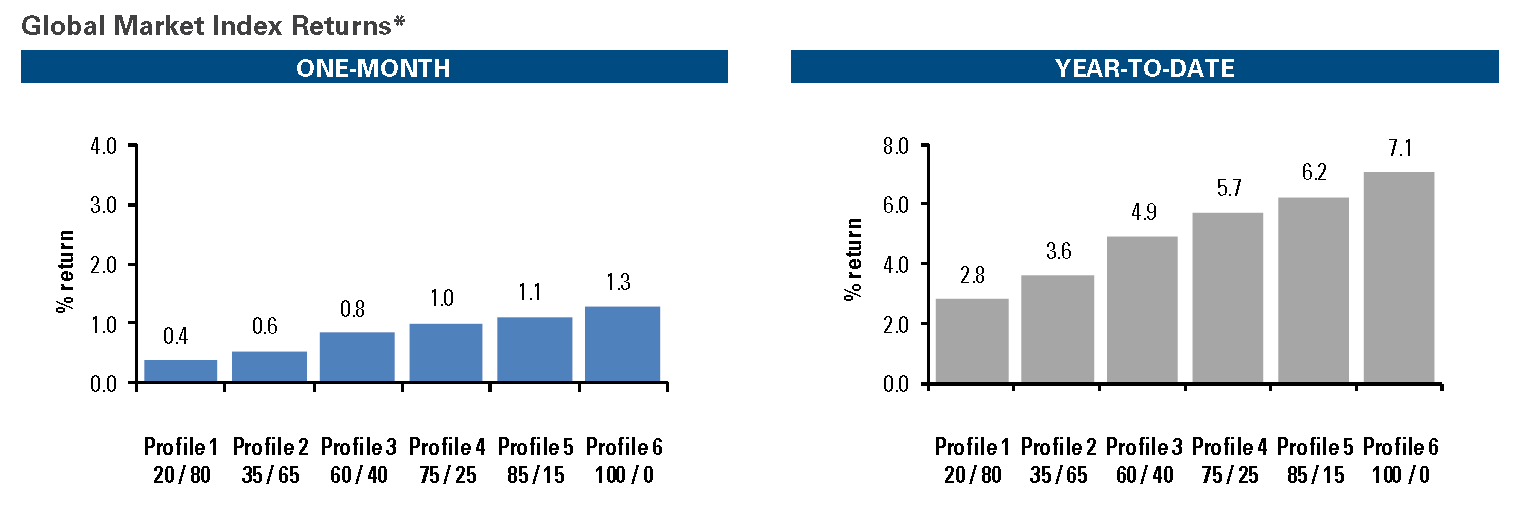The steady diet of headlines pouring out of the Trump administration has been unsettling for most Americans, regardless of where they sit on the political spectrum.
We know equity markets loathe heightened uncertainty. What is happening in Washington is generating an enormous amount of political uncertainty. Yes, the word “impeachment” has even been bandied about in conventional circles. It was responsible for a one-day sell-off last month that cost the Dow 373 points (St. Louis Federal Reserve).
Blame the knee-jerk reaction on allegations President Trump asked then FBI Director James Comey to end an investigation of former National Security Advisor Michael Flynn. There hadn’t been much downside action in the major indexes recently, so talk of impeachment jarred the short-term crowd.
But, political as well as international uncertainty has yet to generate economic uncertainty. Hence, and this is important, we have seen little downside in stocks. It really is about the economy.
Given the comparisons to Watergate, let’s take a high-level look at what was happening economically in the early 1970s and compare it to today.
Table 1: Then vs. Now
| 1973-74 | 2017 |
| Inflation rose to double-digit levels, peaking at over 12% | Inflation remains low |
| Interest rates were spiking higher; prime loan rate hit 12% | Interest rates remain low |
| OPEC oil embargo roils economy, oil prices rise four-fold | A glut of oil exists today and prices are well below levels of recent years |
| The unemployment rate jumped as the economy fell into a steep recession | Employment is rising, the unemployment rate is at a cyclical low, and the economy is expanding |
Source: St. Louis Federal Reserve, U.S. State Dept.
As Table 1 illustrates, the fundamentals are radically different today.
Beyond the brief synopsis I provided above, I’ll stay out of the political weeds and let you form your own opinions. Stepping briefly into the political arena feels like I’ve stepped into a minefield! But I felt it was important to provide some context in relation to the markets.
My job is to be your financial advisor and financial confidant. That is where I focus my energy. I’d be happy to entertain any questions you may have about your portfolio, your financial plan, and how I believe various events of the day may impact your investments.
But let’s stick to your financial roadmap.
Table 2: Key Index Returns
| MTD % | YTD % | 3-year* % | |
| Dow Jones Industrial Average | +0.3 | +6.3 | +7.9 |
| NASDAQ Composite | +2.5 | +15.1 | +13.5 |
| S&P 500 Index | +1.2 | +7.7 | +7.8 |
| Russell 2000 Index | -2.2 | +1.0 | +6.5 |
| MSCI World ex-USA** | +2.8 | +11.0 | -1.5 |
| MSCI Emerging Markets** | +2.8 | +16.6 | -0.7 |
| Bloomberg Barclays US Aggregate Bond TR | +0.8 | +2.4 | +2.5 |
Source: Wall Street Journal, MSCI.com, CNBC, Morningstar
MTD returns: April 28, 2017—May 31, 2017
YTD returns: December 30, 2016—May 31, 2017
*Annualized
**in US dollars
Shedding light on a confusing maze of options–financial literacy
I recently came across a definition of financial literacy in Wikipedia that I believe sums up the term well. I’ll paraphrase: “It refers to the set of skills and knowledge that allows an individual to make informed and effective decisions with all of their financial resources.”
How do you manage money? How does one come up with financial goals and a plan to reach those financial goals? How do we make effective decisions with our financial resources?
These are easy questions that don’t command easy answers. You see, the financial arena is much more complex than it was 50 years ago. There is a downside to the proliferation of choices we have today. It adds a layer of complexity and creates confusion. Many don’t know where to begin. Many fall into paralysis by analysis.
One of my goals in my practice is to educate the investor. I know we cover various topics in our meetings, but I’ve learned that some folks feel uncomfortable about asking questions they perceive as too simple. Don’t we all?
Let me say this–there isn’t a bad question. I want you to be comfortable with what we recommend. I understand that you reach out to me for assistance with your finances, and I take that responsibility very seriously.
While the financial plans we advocate encompass basic principles, we do not take a cookie-cutter approach. Instead, we tailor our advice to your unique situation.
So, let’s review some of the assets we may recommend and briefly explain how they work.
So, let’s begin with something simple–stocks.
Investopedia defines a stock as “a type of security that signifies ownership in a corporation and represents a claim on part of the corporation’s assets and earnings.” If the company pays a dividend, it provides you with income.
Stocks can rise and fall in value.
Next, bonds. When you purchase a bond, you are lending an entity money, usually the government or a corporation. For your cash, you will be paid interest, usually every six months.
The yield you receive is based on the credit risk of the firm. Bonds can rise or fall in value but are typically much less volatile than stocks.
The worst-case scenario with stocks or bonds–a company goes bankrupt and you lose your entire investment.
That’s one reason why we highly recommend you diversify. You are not putting all your eggs in one basket.
Diversification doesn’t eliminate risk, but it does spread out the risk, potentially enabling you to earn a return that has historically exceeded the return on a bank savings account.
Let’s look at three other investment vehicles.
One quick way to diversify is to choose what’s called a mutual fund or an exchange-traded fund (ETF).
Simply put, a mutual fund is managed by a professional who purchases a diversified portfolio of stocks and/or bonds. There are thousands of mutual funds to choose from, and we carefully select ones that we believe are best suited for your portfolio.
More recently, ETFs have become quite popular. Many have very low expenses and allow you to instantly diversify. Some are designed to mimic broad areas of the market, such as the S&P 500 Index. Others mimic an index that’s industry-specific, such as banking, health care, energy, or housing.
Both securities can rise or fall in value.
Let’s look at one more–the REIT, or real estate investment trust. A REIT is designed to produce income by investing in real estate. In many ways, it has characteristics that are similar to both a mutual fund and an ETF.
Like a good mutual fund, a publicly traded REIT allows one to instantly diversify among a broad portfolio of income-producing properties that would be inaccessible to the small investor. Unlike real estate, a publicly traded REIT is liquid.
Except under extraordinary circumstances, it can be quickly turned into cash. Like an ETF or mutual fund, it may rise or fall in value.
Space limits prevent a much more detailed survey of financial planning topics. Your needs may bend toward estate planning, retirement income planning, insurance, charitable giving, college savings, and other areas. In fact, I dedicated substantial space to retirement-income planning and college savings in recent newsletters.
That said, let me reiterate. I’m just an email or phone call away if you have questions.
Bottom line
Every situation is unique, but there are fundamental financial principles that guide our recommendations.
Finally, let me repeat, there are no bad questions. What we don’t know can hurt us. And financial ignorance can be extremely costly.
Let’s talk if you have questions. That’s what I’m here for.
Assisting you in pursuit of your financial goals and shedding light on financial complexities provides our team with an enormous amount of satisfaction. Financial literacy is just one of the avenues that will help place you on the road to reaching your goals and dreams.
———————————
All investing involves risk, including the potential loss of principal. No investment strategy, including diversification, can guarantee a profit or protect against loss. In general, the bond market is volatile as prices rise when interest rates fall and vice versa. Bonds are also subject to other types of risks such as call, credit, liquidity, interest-rate, and general market risks. When redeemed, mutual fund shares may be worth more or less than the original amount invested. Given the fees and expenses associated with ETFs, there is potential that they may underperform the specific index being tracked. Indexes are unmanaged and cannot be invested in directly. An investment in a REIT involves a high degree of risk and is not suitable for all investors. All data are taken from sources believed to be reliable, but Royal Alliance makes no guarantee of their accuracy. All suggestions are general in nature and may or may not reflect your individual situation.
DANIEL F. YASHAREL, MSFS, CFP, RICP
Senior Partner
NWF Advisory Group
CA Insurance Lic. # 0678291
Master of Science in Financial Services
Certified Financial Planner™
Retirement Income Certified Professional
Chartered Advisor in Philanthropy
Accredited Estate Planner
Chartered Financial Consultant
Chartered Life Underwriter
Real integrity is doing the right thing,
knowing that nobody’s going to know whether you did it or not.
11835 W. Olympic Boulevard, Suite 1155E, Los Angeles, CA 90064
(310) 475-5854 Fax (310) 773-9888
e-mail: yasharel@nwfadvisory.com
————————————————————
Registered Representative offering securities through of Royal Alliance Associates, Inc., a registered broker-dealer and Member FINRA/SIPC. Investment Advisory and Financial Planning Services offered through NWF Advisory Services, Inc., a Registered Investment Advisor which is not affiliated with Royal Alliance.





